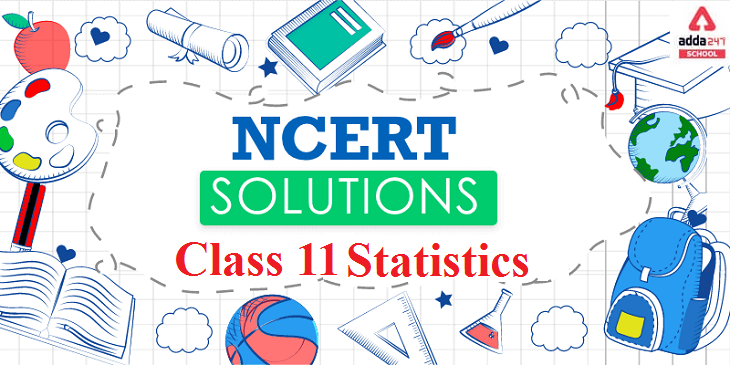
NCERT Solutions provides an overall overview of the units and the chapters covered within each unit. Here, we will provide the complete information about the revised and updated syllabus.
The revised syllabus of Statistics subject of class 11 involves various topics and concepts that prepares students for better future with clear base of the subject.
Statistics is a mathematical body of science that deals with the collection, analysis, interpretation, presentation of numerical data and masses. In other word Statistics is a group of quantitative data. The word “Statistics” is often used, it is derived from the Latin word ‘Status’ which means a collection of figures or numbers; those constitute some data of our human interest.
The NCERT Solutions PDFs at ADDA 247 provides a accurate and easy solution for all the problems covered in the NCERT books. ADDA 247 develop a solid conceptual base in students which plays a significant role in the latter stages of preparing for the competitive exams. We provide detailed solution to NCERT problems with a prescribed syllabus.
NCERT Solutions For Class 11 Statistics Chapterwise PDF
NCERT solutions for Class 11 Statistics, chapter wise is given below.
| Units | Name of the Chapter |
| Chapter 1 | Introduction |
| Chapter 2 | Collection of Data |
| Chapter 3 | Organisation of Data |
| Chapter 4 | Presentation of Data |
| Chapter 5 | Measures of Central Tendency |
| Chapter 6 | Measures of Dispersion |
| Chapter 7 | Correlation |
| Chapter 8 | Index Numbers |
| Chapter 9 | Use of Statistical Tools |
NCERT Solutions Class 11 Statistics: Syllabus
|
SYLLABUS OF STATISTICS CLASS-11 |
||
| CHAPTER NO. | NAME OF THE CHAPTER | MARKS |
| Chapter-1. | Introduction | |
| Chapter-2. | Collection of Data | |
| Chapter-3. | Organization of Data | |
| Chapter-4. | Presentation of Data | |
| Chapter-5. | Measures of Central Tendency | |
| Chapter-6. | Measures of Dispersion | |
| Chapter-7. | Correlation | |
| Chapter-8. | Index Numbers | |
| Chapter-9. | Use of Statistical Tools | |
CHAPTER-1: What is Economics, Meaning, Scope and Importance of Statistics in Economics
CHAPTER-2: Collection of data, Source of data- Primary and Secondary data, how basic data is collected, Method of collection of data, Some important source of secondary data, Census of India and national sample survey organization
CHAPTER-3: Meaning and types of variables, Frequency distribution
CHAPTER-4: Tabular Presentation and Diagrammatic Presentation of Data: 1. Geometric forms (Bar Diagram and Pie Diagram), 2. Frequency Diagram (Histogram, Polygon and Ogive), 3. Arithmetic line Graphs (Time Series Graph)
CHAPTER-5: Mean (Simple and Weighted), Median and Mode
CHAPTER-6: Absolute Dispersion (Range, Quartile Deviation, Mean Deviation, Standard Deviation), Relative Dispersion (Co-Efficient of Quartile Deviation, Co-Efficient of Mean Deviation, Co-Efficient of Variation), Lorenz curve, Meaning and its Application
CHAPTER-7: Meaning, Scatter Diagram, Measures of Correlation, Karl Persons Method, Spearman’s Rank Correlation
CHAPTER-8: Meaning, Types- Wholesale Price Index, Consumer Price Index and Index of Industrial Production, Use of Index Numbers, Inflation and Index Numbers
















